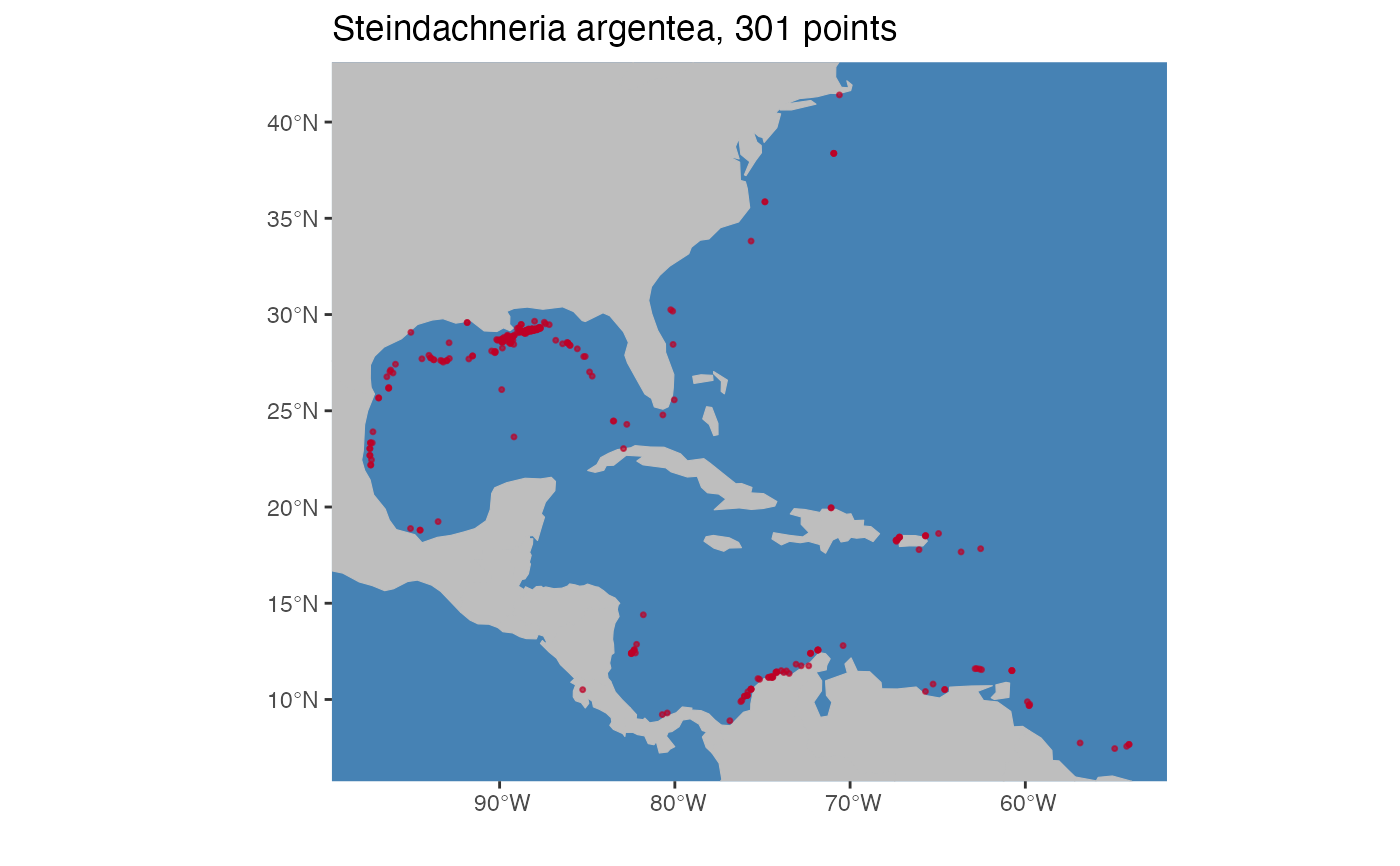A convenient wrapper around ggplot to generate formatted occurrence point plots.
pointMap(
occs,
spName,
land = NA,
ptCol = "#bd0026",
landCol = "gray",
waterCol = "steelblue",
ptSize = 1,
verbose = TRUE,
...
)Arguments
- occs
A
data.framewith at least two columns named "longitude" and "latitude" or that can be coerced into this format.- spName
A character string with the species name to be used in the plot title.
- land
An optional coastline polygon shapefile of types
sforSpatRasterto provide geographic context for the occurrence points.- ptCol
Color for occurrence points on map
- landCol
Color for land on map
- waterCol
Color for water on map
- ptSize
numericvalue forcex; size of occurrence points on map.- verbose
logical. Switching toFALSEmutes message describing which columns inoccsare interpreted as x and y coordinates.- ...
Additional optional arguments to pass to
ggplotinitial plot object.
Value
A ggplot plot object.
See also
Examples
occs <- read.csv(system.file("extdata/Steindachneria_argentea.csv",
package='voluModel'))
spName <- "Steindachneria argentea"
pointMap(occs = occs, spName = spName,
land = rnaturalearth::ne_countries(scale = "small",
returnclass = "sf")[1])
#> Using decimalLongitude and decimalLatitude
#> as x and y coordinates, respectively.
#> Warning: Use of `occs[[xIndex]]` is discouraged.
#> ℹ Use `.data[[xIndex]]` instead.
#> Warning: Use of `occs[[yIndex]]` is discouraged.
#> ℹ Use `.data[[yIndex]]` instead.
